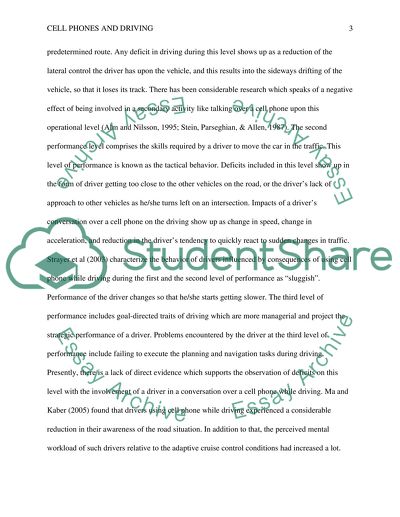Cite this document
(“Cell Phones and Driving Research Paper Example | Topics and Well Written Essays - 1500 words”, n.d.)
Retrieved from https://studentshare.org/english/1446120-cell-phones-and-driving
Retrieved from https://studentshare.org/english/1446120-cell-phones-and-driving
(Cell Phones and Driving Research Paper Example | Topics and Well Written Essays - 1500 Words)
https://studentshare.org/english/1446120-cell-phones-and-driving.
https://studentshare.org/english/1446120-cell-phones-and-driving.
“Cell Phones and Driving Research Paper Example | Topics and Well Written Essays - 1500 Words”, n.d. https://studentshare.org/english/1446120-cell-phones-and-driving.


